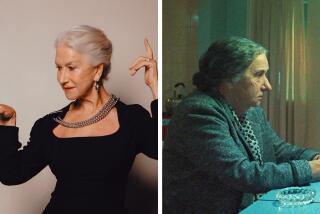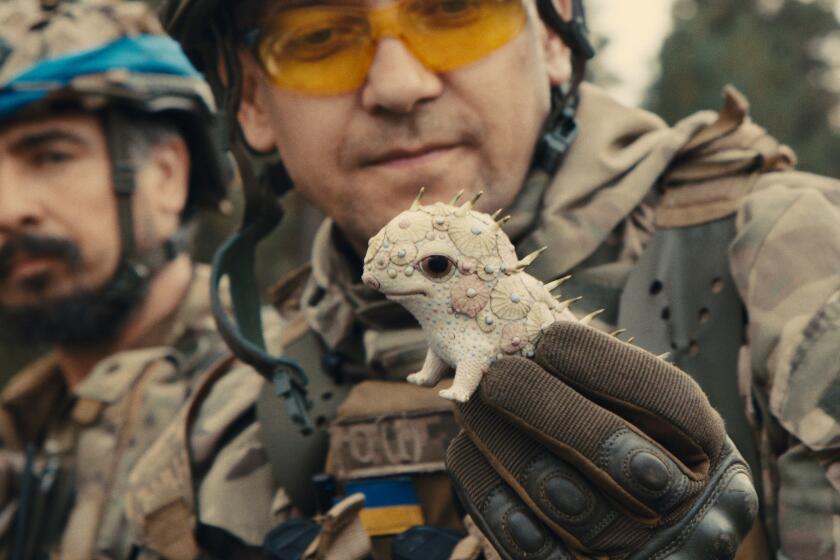Eustace Lycett, 91; Oscar-winning special effects expert
- Share via
When Eustace Lycett was studying mechanical engineering at Caltech in Pasadena in the 1930s, he figured he’d wind up in the oil or aircraft industries when he graduated. He never considered a career in the movies.
But three days after graduating in 1937, he went to work in the engineering department at the Walt Disney studio on Los Angeles’ Hyperion Avenue, where he worked on the studio’s new multi-plane camera. The device gave an unprecedented illusion of depth to key scenes in Disney’s animated films, including “Snow White and the Seven Dwarfs,” which premiered in L.A. that December.
So began Lycett’s more-than-40-year career at Walt Disney Studios, where he became head of the special photographic effects department in 1958 and an Academy Award winner for his contribution to the special visual effects in “Mary Poppins” (1964) and “Bedknobs and Broomsticks” (1971).
Lycett, who retired from Disney after doing special effects on the 1980 film “The Last Flight of Noah’s Ark,” died Nov. 16 at 91 of age-related causes in a Fullerton nursing home, according to the studio, which did not learn of his death until recently.
In the 1940s, Lycett had become an assistant to Ub Iwerks, who was supervising optical printing on Disney films, combining live-action with animation. The movies included “The Three Caballeros,” “Song of the South” and “So Dear to My Heart.”
In addition to the Oscars he won, Lycett also earned Academy Award nominations for his part in the visual effects for “The Absent-Minded Professor” (1961) and “The Black Hole” (1979).
“The idea is to develop believable optical effects, and this is done through composite photography,” he explained in a Times interview in 1962, when he and Robert Mattey were nominated for “The Absent-Minded Professor,” a comedy in which a college professor (played by Fred MacMurray) invents an anti-gravity substance.
“Composite photography is placing in desired perspective on one film what is already on other films,” said Lycett, whose favorite achievement at the time was “Darby O’Gill and the Little People.”
“The problem was to take the small animated Leprechauns and make them look 18 inches tall alongside the life-sized people in the story,” he said.
Over the years, Lycett was involved in a variety of innovative photographic effects for Disney classics such as “20,000 Leagues Under the Sea,” “The Shaggy Dog,” “Swiss Family Robinson,” “The Gnome-Mobile” and “The Love Bug.”
One of his biggest challenges was “Bedknobs and Broomsticks,” which required “magically” bringing to life suits of armor and medieval weapons and having Angela Lansbury’s character fly on a broom, as well as having animated characters interact with the live-action actors.
For Disneyland, Lycett helped develop Circle-Vision, a process of film projection on a 360-degree screen; and he was involved in the theme park’s “Rocket to the Moon” attraction. He also worked on the engineering for “Great Moments with Mr. Lincoln” at the 1964-65 New York World’s Fair and the ensuing “Mr. Lincoln” attraction at Disneyland.
Lycett viewed Disney as a genius.
“He was a taskmaster, and we knew not to cross him,” he told the Orange County Register in 1995. “But after sitting with him for a half-hour, you were caught up in his enthusiasm.”
Disney, he said, “knew when a film was right. At night, he’d come look over storyboards; we knew better than to leave anything on our desk. And when he got older, he respected us technicians more and more. We were the necessary evil.”
Born Dec. 21, 1914, in Stoke-on-Trent in Staffordshire, England, Lycett spent his first eight years in Chile, where his father was a mining manager. He then attended boarding school in England before the family moved to California in 1929.
Lycett’s wife of 67 years, Mary Ethel, died in 2004. He is survived by four sons, Kenneth, William, Roy and Victor; eight grandchildren; and 13 great-grandchildren.
More to Read
Only good movies
Get the Indie Focus newsletter, Mark Olsen's weekly guide to the world of cinema.
You may occasionally receive promotional content from the Los Angeles Times.









